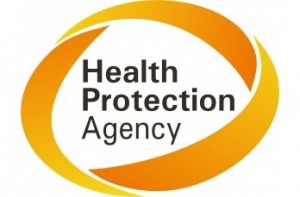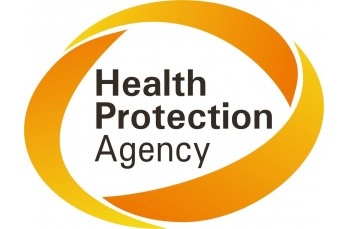The Health Protection Agency (HPA) is reminding people to be ‘tick aware’ this year and take sensible precautions to reduce their risk of Lyme disease, as Tick Bite Prevention Week (26 March – 1 April) begins.
 |
| [relatedPosts title=”Related Posts”] |
|
|
Lyme disease is a bacterial infection which is transmitted by tick bites. Ticks are tiny spider-like creatures which can be found in forests, woodland, heaths, moorland areas and in suburban parkland. Most ticks do not carry the infection but any area in which ticks are present should be regarded as potential risk areas for acquiring Lyme disease. Late spring, early summer and autumn are peak times for tick bites and coincide with people venturing into the great outdoors in the warmer weather.
There were 905 laboratory-confirmed cases of Lyme disease reported to the HPA in England and Wales in 2010 – continuing a trend which has seen a rise in cases in recent years. The majority of cases (741) were acquired in the UK rather than overseas, with 86 per cent of these (637) identified among residents in the south of England (the South West, South East and London).
However, not all cases of Lyme disease are confirmed by laboratory testing and, as in previous years, the overall number of Lyme disease cases in England and Wales is estimated at between 2,000 and 3,000 cases a year. Incidence of Lyme disease acquired in England and Wales remains low compared to some other European countries or in North America.
Cases of Lyme disease are often acquired through recreational activities including camping, walking, hiking and mountain-biking, where tick exposure is more likely. Areas where the infection has been transmitted in the UK include popular holiday destinations such as Exmoor, the New Forest, the South Downs, parts of Wiltshire and Berkshire, Thetford Forest, the Lake District, the Yorkshire moors and the Scottish Highlands.
Dr Hilary Kirkbride, head of zoonotic infections at the HPA, said: “With the warmer weather upon us, more people will be planning outdoor activities. Being active outdoors is great for our health, but as this is also the time of the year ticks become active, taking some simple precautions can help to keep you and your family safe from tick bites and reduce the risk of Lyme disease.
“If you find a tick it should be removed promptly, as infected ticks are unlikely to transmit the infection if they are removed in the early stages of attachment. Ticks can be removed with tweezers or special tick hooks, pulling gently upwards away from the skin. People who develop a rash or other symptoms after a tick bite should consult their GP.”
To minimise the risk of being bitten by an infected tick, the HPA advice is to:
- Wear appropriate clothing in tick-infested areas (a long sleeved shirt and long trousers tucked into socks). Light coloured fabrics are useful, as it is easier to see ticks against a light background
- Consider using insect repellents, e.g. DEET-containing preparations
- Inspect skin frequently and remove any attached ticks
- At the end of the day, check again thoroughly for ticks, especially in skin folds
- Make sure that children’s head and neck areas, including scalps, are properly checked
- A shower or bath after returning from a tick-infested area helps to reduce risk
- Check that ticks are not brought home on clothes
- Check that pets do not bring ticks into the home on their fur
Dr Kirkbride, added: “It’s important that people look out for ticks after visiting affected areas especially in the southern counties of England, the Lake District and the Scottish Highlands to reduce the risk from getting bitten.
“Ticks that can transmit Lyme disease are very small – about the size of a poppy seed – and can easily be overlooked, so it is important to check regularly for attached ticks on the skin.”
The most common and often only symptom of Lyme disease is a rash, which gradually spreads from the site of the tick bite. The rash can cover a large area and last for weeks if untreated. Some patients may also have ‘flu-like’ symptoms. More serious symptoms may appear in some untreated patients in the following weeks or months. These can affect the nervous system, joints and rarely the heart or other tissues. Lyme disease can be treated successfully with antibiotics. Early treatment usually clears the rash within several days and helps to prevent the development of complications. More serious symptoms also respond to antibiotic treatment.
Further Information
- Laboratory reports of Lyme borreliosis: England and Wales, annual totals and rates, 2002 to 2010
| Year(s) | Total reports received | Mean annual rate per 100,000 population |
| 2002 | 340 | 0.64 |
| 2003 | 292 | 0.55 |
| 2004 | 500 | 0.95 |
| 2005 | 595 | 1.10 |
| 2006 | 768 | 1.46 |
| 2007 | 797 | 1.49 |
| 2008 | 813 | 1.52 |
| 2009 | 863 | 1.59 |
| 2010* | 905 | 1.64 |
*Data for the most recent years are provisional and subject to change
- Regional breakdown for 2010
| Region | Total reports | Rate* | Indigenous reports | % indigenous reports | Rate*(indigenous cases) |
| East of England | 33 | 0.56 | 24 | 3.2 | 0.41 |
| East Midlands | 23 | 0.51 | 13 | 1.8 | 0.29 |
| London | 99 | 1.27 | 62 | 8.4 | 0.79 |
| North East | 21 | 0.80 | 20 | 2.7 | 0.77 |
| North West | 31 | 0.45 | 16 | 2.1 | 0.23 |
| South East | 391 | 4.59 | 337 | 45.5 | 3.95 |
| South West | 264 | 5.00 | 238 | 32.1 | 4.51 |
| West Midlands | 21 | 0.38 | 14 | 1.9 | 0.26 |
| Yorkshire & Humberside | 13 | 0.25 | 9 | 1.2 | 0.17 |
| Wales | 9 | 0.30 | 8 | 1.1 | 0.27 |
| England & Wales | 905 | 1.64 | 741 | 100.0 | 1.34 |
*Rate per 100,000 population. Based on ONS mid-year population estimates for 2010
- More information about Lyme disease is available from the HPA website here.
- Lyme disease leaflets produced in conjunction with The Royal Parks and New Forest District Council are available here.
- More information about the HPA and Biological Records Centre (BRC) tick recording scheme is available here.
- Information on Tick Bite Prevention Week (26th March – 1st April 2012) can be found on the Borreliosis and Associated Diseases Awareness UK (BADA) website here.





